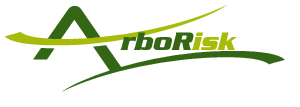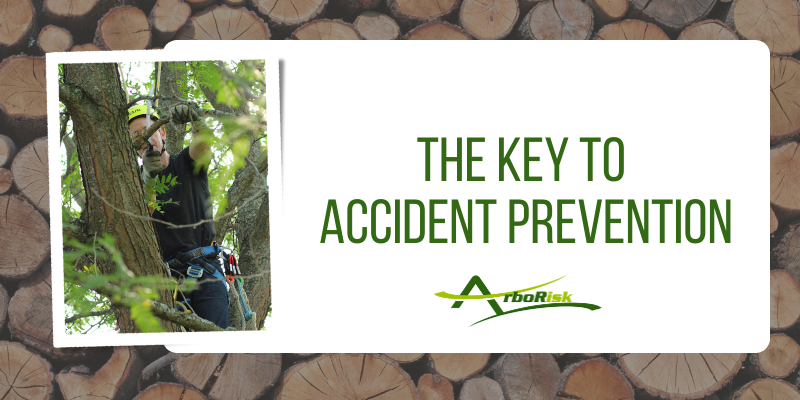The hierarchy of controls is a system of controlling risks in the workplace, a prevention through design strategy for prevention and/or reduction of occupational injuries, illness, and fatalities. Despite the best designed and applied control solutions, there is an independently acting human being that is involved in every workplace injury. Human behavior is the one thing that cannot be eliminated, substituted, engineered or controlled to create safety on the worksite. The person is most often forgotten in risk control hierarchies.
In the arboriculture industry, a lot of focus is put on regulation and technical training.
These administrative and engineering type controls can and do help, but alone they are not the total solution. For instance, the ANSI Z 133 has been in existence since 1968. As a consensus standard, it is updated at regular intervals by those in the industry. Yet the incident rate for occupational injuries still remains high compared to other industries. The same can be said for technical or skills training. Advances in tools and techniques have been progressive, the number of individuals in the industry providing quality training has increased, yet the incident numbers as a whole remain high.
What regulation and training cannot take into account is the human. Even new, top of the line tools and techniques can be used poorly or misaligned. Highly articulated and crafted regulation with the best intent still must be followed by those doing the work to have any effect.
When, as an industry, we look at the incidents in arboriculture, we see again and again how misuse of well-designed tools, misapplication of well-established techniques, and/ or disregard for industry best practice leads to death and injury. This, coupled with tens of thousands of hours of one-on-one patient interaction with an orthopaedic physical therapist for occupational related injuries, leads us to the observation that many injuries could NOT have been prevented with more safety training and engineering.
While a vital part, safety training is just one part of the system.
Without an understanding of how and why humans act, training loses effectiveness. The worker must choose the safe act, the safe tool, the safe technique. There is a human involved in every accident or near hit. The subcon- scious nervous system is in charge of the human’s thoughts and actions 95% of the day; therein lies the key to a safe worksite and meaningful reduction in incidents.
Safety training involves establishing or changing a behavior. When we train or teach, we are speaking to the analytical part of the brain. However, access to training in the moment of a true emergency is not possible for some on this analytical level. It lies behind the gate-keeper of subconscious patterns that are formed from prior experiences, many of which occurred in the first 7-8 years of life. When choice is involved, the human brain will rely on established patterns and appear to resist change. Breaking these established patterns for new, safer ones, is an involved process that takes awareness, patience, and time.
This process of behavioral change cannot be regulated or engineered.
Forced compliance is short term. Procedure can only serve as a guideline for action. The impetus of action, choice or decision must come from established behavioral patterns. This is easily seen in the all-too-common faulty logic on the tree care job site of, “we have been doing it this way for years and haven’t got hurt yet.” Often said or implied, this attitude shows the basic human reliance on pattern and the reluctance to change.
Even in the face of overwhelming evidence to the contrary, many production arborists make a conscious decision to ignore hazards and use technique known to have high risk of injury. Or conversely, they choose not to take actions known to protect them when engaged in hazardous activity.
Luck or hope is not a safety strategy.
The number of times an “unsafe” act has not resulted in dire consequences does not reduce the hazard. Yet many use this as a justification for not using personal protective equipment, established procedure or new techniques. The best tools and regulations can and often are short circuited by human behavior.
Some humans are more tolerant to change than others. The predictability of change tolerance is often found in the story behind one’s eyes. What has been one’s prior life experience with change? Has life thrown several unexpected and unfortunate changes at them? Did life throw a single pain- ful experience at an early stage of life, which set a pattern in their nerv- ous system resulting in their need for consistency?
People make changes for one of two reasons, out of desperation or out of inspiration.
Desperation becomes a catalyst for change. Acute pain gets one’s attention; it screams and demands that something be done NOW. While chronic pain is an underlying, low-grade discomfort that allows one to put it off, the voice of chronic pain says; “I can’t keep doing this” or “I can’t keep living like this.” Yet, most often a change is not made until the body takes one out with an acute injury or illness. Why is this? The answer lies in the understanding of the autonomic nervous system.
Humans have a pattern of life, learning and adaptation, a rhythm that becomes familiar and predictable. This pattern, whether healthy or not, becomes recognized by the autonomic nervous system as normal and is perceived as safe. Anything that veers from this pattern can become a trigger; a stimulus that results in an underlying stress response in the body similar to fear. This pattern is exactly why change is so difficult. There is no reasoning this experience, it occurs instantaneously in the body at the subconscious level. You cannot rationalize an irrational response.
In injury prevention, safety training alone often does not create a long-term change in behavior, but the injury itself can be a catalyst to change.
It is not the fear of injury that keeps people safe, rather their ability to tolerate behavior change. For example, a tree care worker has developed a habit of one handing a chainsaw, (a behavior that incident numbers tell us causes many injuries on the tree care job site). The behavior is restricted by legislation as well as manufacturer instructions. Despite legislation and instruction, that pattern is very difficult to change. However, an injury creates an acute pain, often resulting in an immediate change in behavior.
An expert is born from the internal emotional response that can only occur during a real experience.
Many safety trainers share their personal story to inspire others to behavior change related to hazardous actions. The story of pain, expressed through the authentic vulnerability of another human can also become a catalyst of change for others. The emotional connection and response that occurs through authentic storytelling can support the behavior change we are hoping for in safety training. Proper technique, rules, and regulations cannot spawn the same type of long-term change housed in the subconscious.
We believe the key to worksite accident prevention is in transformation of the human nervous system, which involves both the person in the mirror and a supportive, vulnerable team willing to hold each other accountable and learn through shared experiences. When skillfully done, human behavior can be changed through transformation, creating a safer worksite and world.
If as an industry we wish to make long term, lasting change, we must address not only training, and industry regulation, but the third hidden factor of the worker and how he or she makes choices. We must come to understand the vital role subconscious patterns (healthy and unhealthy), the autonomic nervous system, and the story behind the eyes of the people doing the work, all play. Failing to do this is akin to claiming a flat tire is fine as it is only flat on the bottom!
Developing individuals and leaders to see and recognize the cognitive dissonance created when familiar ideas and/or beliefs are challenged or proved ineffective can and will transform this industry. But like the very problems we wish to address, it begins and ends with the individual human. We as trainers and facilitators need to take part in and develop a better understanding of the human factor in all we do as arborists, climbers, sawyers, crew leaders and business owners.
To learn more about Amanda and Tony’s transformational coaching program Leadership Performance Mastery: Uncovering the Leadership of Vital Energy, visit their website at https://www.leadershipofvitalenergy.com/






Recent Comments